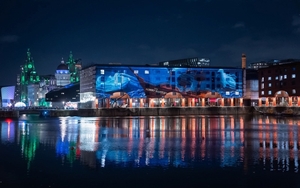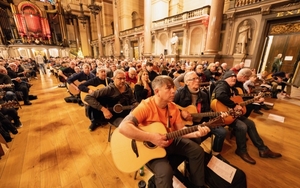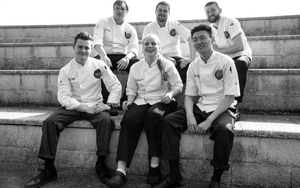PLANS to turn Hope Street's historic Hahnemann Building into more than 100 student flats have been attacked by a newly formed neighbourhood group.
The Maghull Group, which owns the Grade II-listed building, had previously won permission to turn the former Hahnemann Homeopathic Hospital into a so-called boutique hotel. It is currently being used as office space.
The developer got the controversial go-ahead in January to build 600 student flats further down on the opposite side of the road.
 And thisMaghull’s latest plans will see the former hospital and the adjoining Georgian house, 58 Hope Street, being transformed. Even the former mortuary is part of the plan, but residents' group Lovecanning hopes it will be over their dead bodies.
And thisMaghull’s latest plans will see the former hospital and the adjoining Georgian house, 58 Hope Street, being transformed. Even the former mortuary is part of the plan, but residents' group Lovecanning hopes it will be over their dead bodies.
Lovecanning’s steering committee, chaired by resident Robin Riley with Dr Emlyn Williams as secretary, is urging neighbours and businesses to lodge objections to Maghull’s scheme. which would tip the total number of new student flats on Hope Street to more than 700.
In a letter canvassing their support, Dr Williams said: “Already this year permission has been granted for an extra 600 student rooms and studios on Hope Street. Now application is being made to develop another 106 such units of accommodation in the Hahnemann building at 42 Hope Street.”
It went on: “The council agrees that there is need to develop balanced communities and to offer a range of accommodation, businesses and facilities appropriate to the locality. In recent years, however, there has been a veritable tsunami of planning applications by developers keen to provide yet more student accommodation – despite the ready availability of vacant one and two bedroom flats throughout the city centre.”

Dr Williams pointed out that one of Hope Street's “greatest strengths is the diversity of the activities taking place here and the range of people, ethnic and family groups who live, play, study and work within its boundaries.
“Within the locality, 18th-, 19th-, 20th- and 21st-century buildings and streetscapes comfortably complement one another and the area is frequented by thousands of tourists and visitors as well, of course, by those living, studying and working within it.”
Locals are being called upon to make their feelings known to the council, within the next fortnight, if they feel it is a “development too far”.
Local architects Falconer Chester Hall have designed the scheme for Maghull. In its report to the planning department FCH says Hahnemann Hospital presents “a unique housing opportunity for students in a vibrant, young city’.
There will be a modern looking, four-storey extension at the rear of the building, but FCH stressed internal and external features of the building will be retained.
The scheme is currently open for public comment and will eventually go to the council’s planning committee for a decision.
Case notes
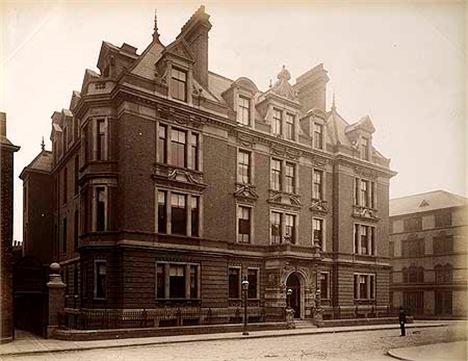 When homeopathy was all the rage
When homeopathy was all the rage
The Hahnemann was designed in ornate Queen Anne revivalist style, with Loire chateau influences, by the celebrated Liverpool architects F & G Holme. Other landmark buildings from the same practice included the Liverpool Conservative Club, which later became the Municipal Annexe in Dale Street, and the County Sessions House in William Brown Street.
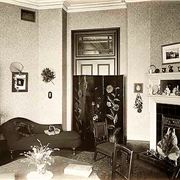 Oooh: Matron's Room at the
Oooh: Matron's Room at the
Hahnemann HospitalThe Hahnemann Hospital was opened in 1887, paid for mainly by local benefactor Sir Henry Tate of Tate & Lyle fame. It was his gift to the poor people of Liverpool to provide free health treatment.
The stipulation was all treatment was to follow the like-cures-like principles of similarities, developed by German Samuel Hahnemann, known as homeopathy.
Despite homeopathy being popular in the 19th and 20th centuries, it has virtually been abandoned by the NHS.
The Hahnemann had wards built to the design principles of Florence Nightingale. It also had an A&E department.
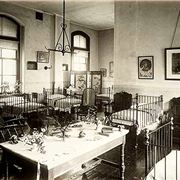 The children's wardDuring the First World War the hospital was requisitioned by the War Office as an Auxiliary Military Hospital. During the Second World War it became part of the Emergency Medical Service.
The children's wardDuring the First World War the hospital was requisitioned by the War Office as an Auxiliary Military Hospital. During the Second World War it became part of the Emergency Medical Service.
The Hahnemann finally closed as a homeopathic hospital in 1976. Treatment switched to Mossley Hill Hospital and was finally reduced to an out-patient clinic in Old Swan.
In later years the building formed part of Liverpool John Moores University, with the former wards being used by the Liverpool School of Art and Design.
See the full planning application here.











